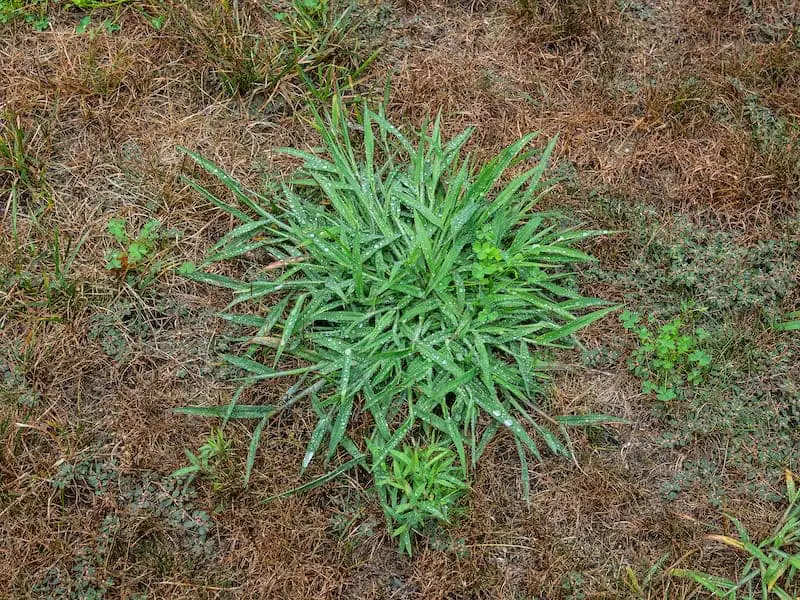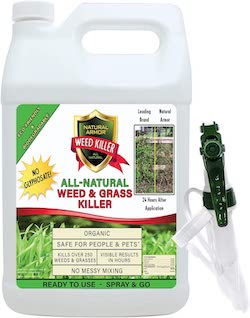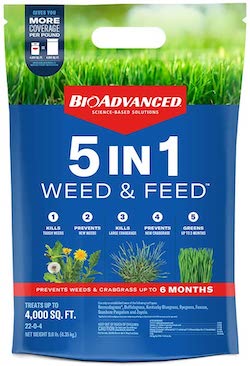Easy Solutions for Getting Rid of Quackgrass
Have you ever noticed grass that springs up where it doesn’t belong? You may have unwanted quackgrass! What is quackgrass, and how do you get rid of it? Can it be prevented? These are questions that many homeowners have during this time of year.
So, how do you get rid of quackgrass? The easiest way to get rid of quackgrass in your yard is to use a herbicide specifically formulated for this purpose. Additionally, you can use a high-quality fertilizer to encourage the growth of healthy grass. This will eventually overtake the unwanted quackgrass.
We’ve written this article to help you identify and get rid of quackgrass. Keep reading to learn more about a few easy solutions for your convenience.
What is Quackgrass?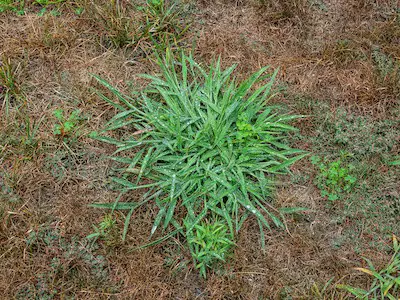
This type of grass is considered to be a weed and is identified as a creeping perennial grass. It may look similar to annual ryegrass or crabgrass. However, it’s easily identifiable by its long tapered blades that are thicker compared to the hollow stem they’re connected to and the lawn-type grasses.
Quackgrass has a distinctive rough leaf blade that wraps around the stem with clasping auricles. This grass type had very deep roots made up of rhizomes. The roots are thick and white and will often break into pieces when removed.
Quackgrass can very easily spread through vacant fields or along roadsides that are often left untouched. Typically, quackgrass will produce seeds during June. The seeds are usually transferred by birds or the wind to new areas.
Seeds can also be introduced from straw bales if you use them when seeding your lawn. Similar to how yellow nutsedge is spread, Quackgrass can also spread under the surface of your property by rhizomes. These can quickly spread from one yard to the neighboring one.
Quackgrass vs. Crabgrass
These two types of grasses look alike but are very different. Quackgrass is a cool-season perennial with the ability to grow high in the mountains. Crabgrass is a warm-season annual. The way they spread is different.
Quackgrass is a perennial weed that can stay green year-round, depending on the climate. This weed is not a native plant. It can reproduce from both seed or long underground stems called rhizomes. These rhizomes can extend up to six feet below the surface. Repeat mowing and various weed killers can help to stunt quackgrass’ growth. The earlier in spring you mow, the quicker you can prevent the grass from starting to grow.
Crabgrass is an annual weed that grows during the warm season. In northern areas, crabgrass may not germinate until late May. Crabgrass can refer to various related plant species. Non-native smooth crabgrass and hairy crabgrass are both common concerns for homeowners. This grass takes over the bare spots where nothing else grows.
Things like pH, moisture, and fertility don’t have much of an effect on crabgrass. It dies in the winter, which leaves brown areas that reproduce from seed each year. Each plant produces thousands of seeds that can stick around for years.
The best way to deter both quackgrass and crabgrass is to have a lush, healthy lawn. Since these two weeds have no problem growing in bare areas that your regular grass may struggle to grow in, it’s best to try and promote strong, healthy grass.
You can find further information on getting rid of crabgrass naturally here.
How Can You Get Rid of Quackgrass?
The best way to rid your lawn of weeds and quackgrass is first to ensure that you don’t bring it in with any new plants. Check plants you’ve brought home from stores or nurseries for quackgrass weeds and remove them entirely from those plants before you plant the new plant. If you find quackgrass in your yard, you should act quickly because it can easily spread throughout your lawn.
Because this grass type is considered to be a weed, it might not respond well to the typical weed herbicide applications. If you use a selective weed killer or non-selective weed killers, the quackgrass weeds won’t respond. If you use these removal methods, you may be able to kill the quackgrass, but you’ll also kill the other plants growing around it. Whatever removal process you use may differ based on how consistently the quackgrass is distributed throughout your lawn.
 Effective Quackgrass Treatment Methods
Effective Quackgrass Treatment Methods
Here are a few ways to treat quackgrass:
- Chemical: You may have to make several applications of a non-selective herbicide to kill off the quackgrass while it’s growing. Once the quackgrass completely dies, you should reseed.
- Management: By increasing fertilizer treatment, your lawn will grow faster and will choke out quackgrass. Fertilizer adds nitrogen to your yard, which will make it grow faster. This means you’ll have to mow more frequently. It’s best to use fertilizer in seasons where your grass is growing, like spring and fall.
During the summer, quackgrass does not do well in the heat and may appear to die off. However, it may return in the fall if it doesn’t fully die off. Any roots that are left in the ground will grow new plants. As soon as you see a new quackgrass plant, remove it and try to remove the roots as well as you can. It can be nearly impossible to remove all of the rhizomes out by hand as each missed one has the potential to produce a new plant. So ensure that you remove the quackgrass as much as possible.
Another solution for getting rid of quackgrass includes crowding it with healthy plants. By overseeding and choking out the quackgrass, you can encourage healthy, wanted plants to grow while suppressing the unwanted weeds. The new plants may not choke it out completely, but it may help stop the spread of new quackgrass weeds.
You can water the new seeds at least twice a day to ensure they grow lush and full. Make sure to mow the grass once it’s longer than three inches. Using a nitrogen fertilizer every two weeks from the spring until fall will help the new plants grow. By repeating these steps, you can slowly choke out quackgrass. This method may take a few years to ensure the quackgrass has disappeared.
Bad Quackgrass Infestations
If your flowerbed or lawn becomes heavily infested with quackgrass, you may need to replant it. First, you should remove any plants you wish to keep. Then, check the soil carefully to see if there are any quackgrass roots and remove them if you find them.
Next, kill the quackgrass in the bed. You can choose to treat the bed with a non-selective weed killer, chemical, or try boiling water. Wait for a week and treat again. Wait a second week to check whether quackgrass continues to grow. If it does, repeat these steps to remove it. This can be very time-consuming, so it’s crucial to treat quackgrass as soon as it’s identified.
How to Prevent Quackgrass
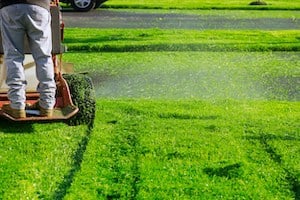 Like most home and lawn issues, it’s best to take preventative measures rather than dealing with a problem that can literally grow out of hand. If you take the time and effort to prevent issues from growing into more significant, unmanageable matters, then you’ll be thankful in the future. The best defensive lawn care practice is the best offense.
Like most home and lawn issues, it’s best to take preventative measures rather than dealing with a problem that can literally grow out of hand. If you take the time and effort to prevent issues from growing into more significant, unmanageable matters, then you’ll be thankful in the future. The best defensive lawn care practice is the best offense.
One of the best ways you can do this is to test your soil. By knowing the recommended sulfur or lime to maintain the proper pH measurement, you can better understand how to treat your lawn. It can also tell you the appropriate nitrogen, potassium, and phosphorus levels to promote healthy, green turf.
The best way you can prevent weed from growing in your yard is to ensure that your lawn is thick and healthy. The thicker your grass, the less room there is for weeds to grow. Learn how to fix a thin lawn here.
Maintaining your lawn is also crucial when preventing quackgrass and other weeds from growing. By mowing at a higher setting, the more shaded the ground will be.
This prevents the sunlight from reaching the soil. Weed seeds sit on the ground and wait for optimal conditions to grow. So, by preventing the sunlight from reaching the ground, you’ll kill off the seeds before they have a chance to take root.
Protect Your Home & Lawn
Protecting your home and your lawn is done best by taking preventative measures. This extends beyond preventing weeds, but also to preventing unnecessary losses! You can easily prevent issues by investing in home, auto, or life insurance! If you have something precious in your life, you’ll want to protect it to the best of your ability.
Things you may want to consider protecting include your home, auto, property, business, health, and life with the help of a Tulsa insurance agent. With a safe, healthy home and a luscious yard, you will be able to enjoy the summer season to its fullest!
Are you looking for more great tips on maintaining your lawn? Find lawn care tips from experts here.

